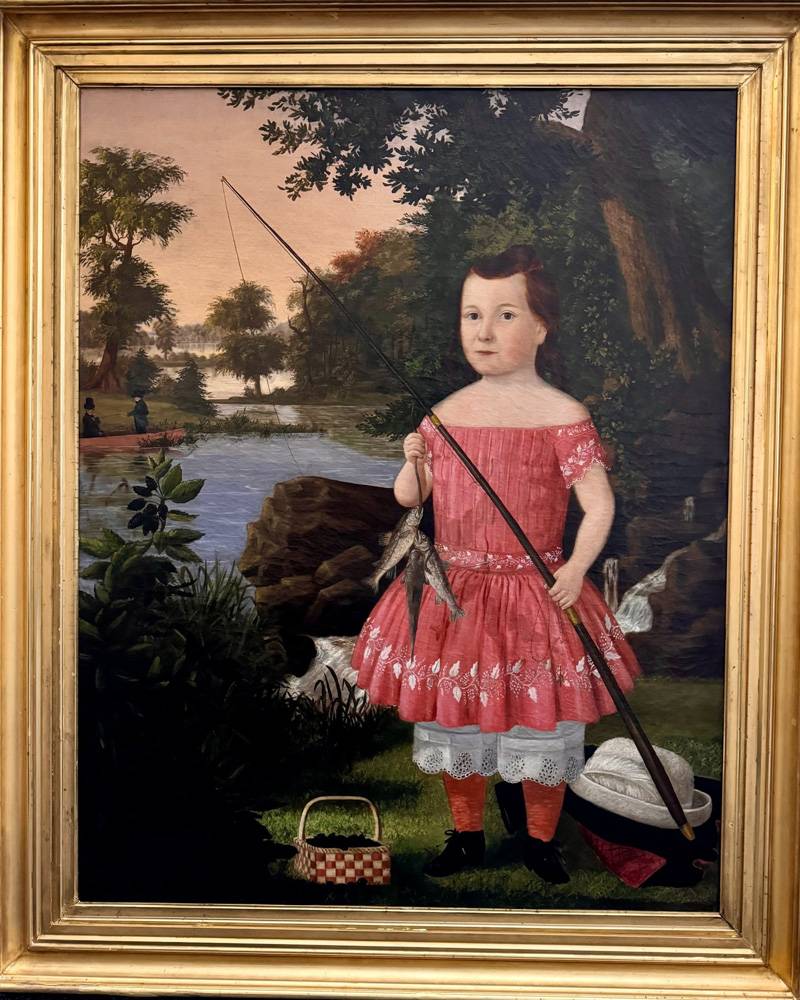
I remember walking into the Holland Land Office Museum and looking at the large portrait of a young child hanging on the wall.
It brought me back to a time when I took my daughters to have their yearly picture taken. It was either at J.J. Newberry or W. T. Grant Department Store. The cost of the sitting was free, and the price for an eight by 10 picture was 99 cents.
You had three choices for background. If your child behaved and smiled, you could be on your way in 15 minutes, but if your child was not in the mood for that milestone 5-year-old portrait, you might have to leave without a picture.
As difficult as it was to get a photo of a 5-year-old picture in 1981, the process was much more challenging in the 1850s.
When Alva B. Willis from Elba wanted a portrait of his five-year-old son, Charlie, referred to as his favorite son, Willis needed to find an artist, which was a difficult task.
One day, a peddler/sign painter put up a sign at Willis Tavern stating that he would do paintings of all kinds at a reasonable rate. Mr. Willis commissioned this artist to paint his son’s portrait.
In the 1850s, making paints and brushes was tedious. The brushes were made of squirrel and oxen hair tied together and inserted into a turkey quill. The quills were attached to wooden handles that were also made by hand. The different-sized brushes were distinguished by comparing them to the size of a bird. For example, the smallest brush would be called a lark, and the largest brush would be a swan.
Making the paint was also quite an ordeal. The Colors were dull or muted earth pigments, red, yellow, ochre (yellow-brown), and lamp black (bluish-black). The pigments were ground into a powder and put into small containers. When needed, the powder was mixed with linseed oil.
The next order of business was what Charlie should wear for his portrait. It was decided that he would wear his Sunday best. His mother made him a soft red dress embellished with many tiny stitches at the neck and hem. White pantaloons, daintily embroidered with delicate flowers, covered his knees. This was not an unusual outfit for a young boy in the 1850s.
The setting for the picture was at Spring Creek in Byron. It was a four-mile wagon ride for Charlie and his father. In the spring, Charlie was positioned with a fishing pole and a line of three freshly caught fish in one hand. On the ground beside him was his white hat, and in the band of the hat was a large ostrich feather.
It was a long and tiring day for Charlie to stand in the hot July sun for four to five hours.
He would celebrate at the end of the day that he was free until tomorrow, when this ordeal would begin again.
Charlie’s father was thrilled with the results and promptly paid the artist $160.00 for the portrait.
Unfortunately, the portrait was never signed, and the story did not end there. Charles' great-grandson, Donald Prichard of Georgia, donated the portrait to the Holland Land Office in the 1990s. Many visitors have enjoyed viewing the portrait over the years, but it began to need restoration. So, after months of being away for conservation, the portrait of Charles Willis is back at the museum.
So, please visit the Holland Land Office Museum and view a portrait of the 5-year-old Charlie with a fishing pole, holding a line with three fish, and posing in a red dress with white pantaloons.
